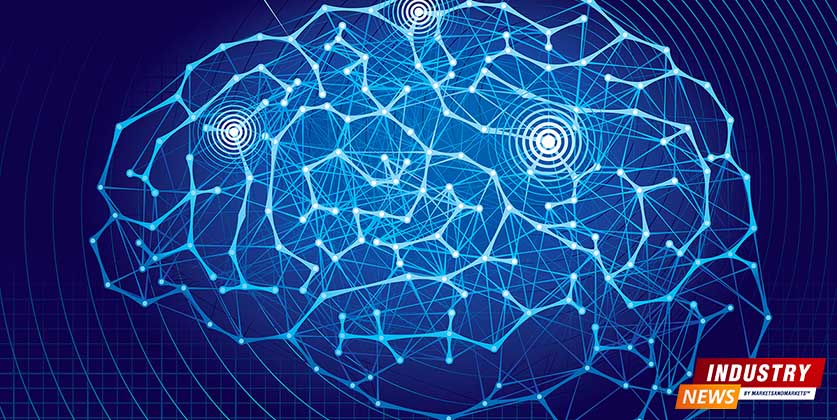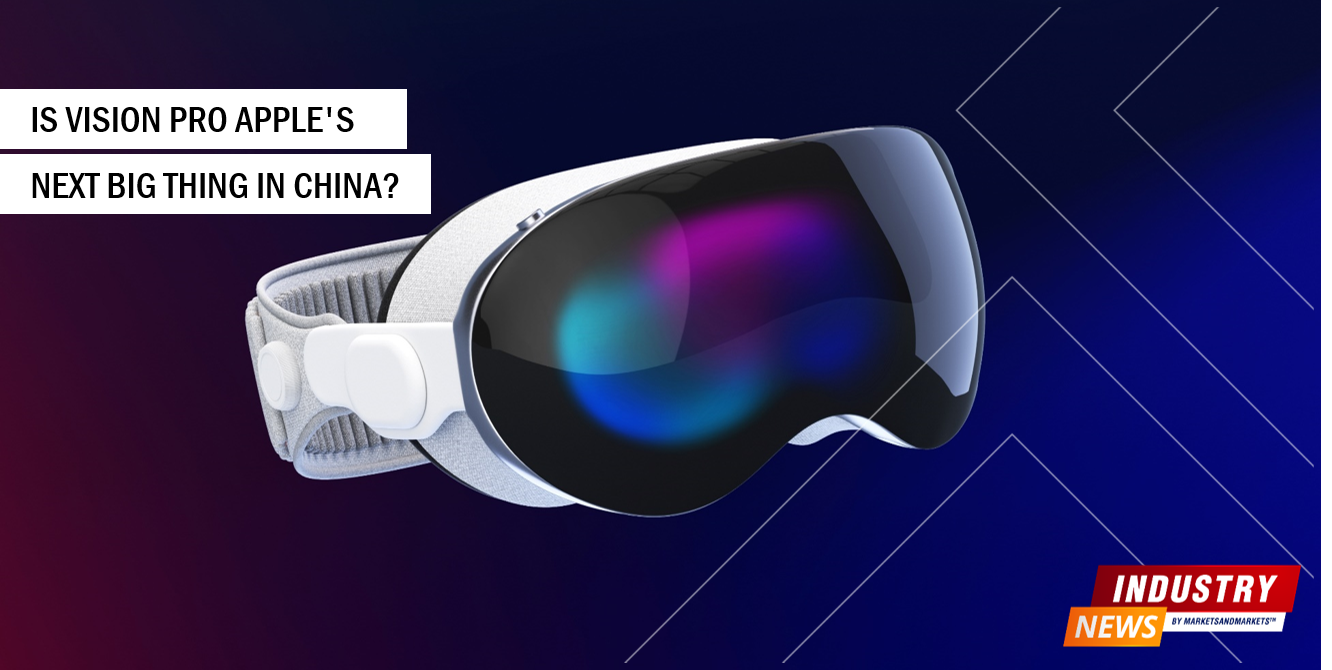Neuralink's Ambitious Journey Towards Brain-Computer Interfaces: An Analysis

This News Covers
- The Prime Study: A Glimpse into the Future
- Which Challenges and Controversies Has Neuralink Seen?
- What are the Market Implications and Future Prospects of Neuralinks' Development?
- Who are top peers of Neuralink?
- Neuralink: A Comprehensive Overview
- What success looks like when we say that nueralink is established?
- How intricate is the working of Neural Links?
Elon Musk's brain-computer interface startup, Neuralink, has been at the forefront of technological advancements aiming to bridge the gap between the human brain and external devices. The recent announcement of its human trials marks a pivotal moment in the company's journey. This analysis delves into the details and implications of this development, drawing insights from multiple sources.
The Prime Study: A Glimpse into the Future
Neuralink's upcoming human trial, aptly named "the Prime Study", signifies a major leap in its mission to revolutionize the way humans interact with machines. The study's primary objective is to assess the safety and functionality of "the Link", Neuralink's brain-computer interface (BCI). The trial aims to empower paralyzed individuals, specifically those with quadriplegia due to cervical spinal cord injury or ALS, to control computer cursors or keyboards using just their thoughts.
The Prime Study is structured meticulously. Spanning six years, it commences with an 18-month intensive phase involving regular interactions with researchers. This is followed by weekly brain-computer interface research sessions and periodic visits over the subsequent five years.
Components Under Test
Three core components of Neuralink's technology will be under scrutiny during the Prime Study.
- N1 Implant: This is the primary brain-computer device that will be surgically placed in the brain region controlling movement intention. The implant boasts 1,024 electrodes across 64 threads, capturing a vast array of neural signals.
- R1 Robot: A surgical marvel, the R1 robot is responsible for the precise implantation of the N1 device into the brain. Its role is crucial in ensuring the safety and accuracy of the procedure.
- N1 User App: Acting as the bridge between the brain and external devices, this software decodes neural signals into actionable computer commands. It's the linchpin that translates thought into action.
Which Challenges and Controversies Has Neuralink Seen?
Neuralink's journey hasn't been devoid of hurdles. The company faced an initial setback when the FDA rejected its proposal in early 2022. However, perseverance led to eventual FDA approval in May, paving the way for the Prime Study.
Beyond regulatory challenges, Neuralink has been embroiled in controversies, particularly concerning its treatment of lab animals. Allegations of invasive experiments on monkeys have cast shadows over the company's practices. Musk has defended Neuralink's actions, emphasizing that the initial tests were conducted on terminally ill monkeys to minimize risks. Despite these assurances, the company remains under scrutiny, especially from animal rights activists.
What are the Market Implications and Future Prospects of Neuralinks' Development?
Neuralink's valuation, as of June, stood at an impressive $5 billion. This valuation underscores the immense market potential and investor confidence in brain-computer interfaces. However, some industry experts believe that it might take another decade for Neuralink's brain implant to transition from a research prototype to a commercially viable product. The success of the Prime Study will undoubtedly influence this timeline and the company's market trajectory.
While Musk's vision of a complete brain-computer interface — one that facilitates telepathy and enables humans to keep pace with AI advancements — remains ambitious, the current focus of the Prime Study is more grounded. It aligns with the broader scientific community's efforts, where researchers have been exploring implants that allow paralyzed individuals to communicate or control devices.
Neuralink's announcement of human trials is a testament to its commitment to pushing the boundaries of what's possible in the realm of brain-computer interfaces. The Prime Study, with its focus on aiding paralyzed individuals, showcases the potential societal benefits of such technology. However, as with all pioneering ventures, Neuralink treads a path filled with both promise and pitfalls. The upcoming trials will not only determine the technological prowess of Neuralink's offerings but will also shape the ethical and societal discourse surrounding the fusion of man and machine.
Here are some insights regarding countries and regions that are showing interest or investment in Neuralink research or similar brain-machine interface technologies:
United States
Neuralink itself is based in the U.S., and there are mentions of the company approaching one of the biggest U.S. neurosurgery centers for potential clinical trials. Additionally, Neuralink has received clearance from the U.S. Food and Drug Administration (FDA) for testing.
China
BrainCo is developing a BCI that can be used to control wheelchairs and other devices. The company's BCI is already being used by hundreds of people with paralysis.
NeuroSky is developing a BCI that can be used to track brain activity and improve cognitive function. The company's BCI is already being used in a variety of settings, including schools, businesses, and hospitals.
United Kingdom
Paradromics is developing a BCI that can be used to restore lost function to people with paralysis. The company's BCI is still in the early stages of development, but it has already shown promising results in early trials.
Synchron is developing a BCI that can be implanted in the brain to treat Parkinson's disease and other neurological disorders. The company's BCI is currently in clinical trials.
Switzerland
Blackrock Neurotech is developing a BCI that can be used to control prosthetic limbs. The company's BCI is already being used by hundreds of people with paralysis.
CTRL-labs is developing a BCI that can be used to control computers and other devices with hand gestures. The company's BCI is still in the early stages of development, but it has already shown promising results in early trials.
Australia
NextMind is developing a non-invasive BCI that can be worn like a headband. The company's BCI is still in the early stages of development, but it has already shown promising results in early trials.
Cortical Labs is developing a BCI that can be implanted in the brain to treat epilepsy and other neurological disorders. The company's BCI is currently in clinical trials.
These are just a few examples of the many advancements in neural links that are happening around the world. Neural links are still in their early stages of development, but they have the potential to revolutionize the way we live and work.
It's important to note that while Neuralink is one of the most well-known companies in the brain-machine interface domain, there are other companies and research institutions worldwide working on similar technologies. The collaboration, competition, and research Focuss from these entities across different countries will play a significant role in advancing the field.
Who are top peers of Neuralink?
Here's a structured summary of Neuralink's competitors or peers in the neurotechnology space:
BrainCo
Founded: 2015
Location: US
Overview: BrainCo was incubated in the Harvard Innovation Lab. The company specializes in brain-machine interface (BMI) technology products, including sensors, hardware, software, and AI. Their wireless EEG headband can detect brain activity and measure various brain states, such as focus, relaxation, and meditation.
Emotiv
Location: US
Overview: Emotiv is a bioinformatics company that focuses on understanding the human brain using electroencephalography (EEG). They manufacture three wearable neuro-headsets that are both intuitive and cost-effective. Their product, Emotiv EPOC+, is an award-winning EEG headset designed for scalable and contextual human brain research.
Kernel
Location: US
Overview: Kernel is dedicated to developing a non-invasive mind/body/machine interface (MBMI) to significantly enhance human cognition. The company's CEO, Bryan Johnson, envisions building a "neuroprosthesis" that aids faster learning, enhanced memory, and coevolution with artificial intelligence. Kernel is working on commercial neurological products to boost memory.
MindMaze
Founded: 2012
Location: Lausanne, Switzerland
Overview: MindMaze operates a computing platform that focuses on building intuitive human-machine interfaces through its neuro-inspired computing platform. They have designed an intuitive machine interface that uses pre-real-time decoding of brain signals via neural prediction.
NeuroSky
Founded: 2004
Location: California, US
Overview: NeuroSky manufactures Brain-Computer Interface (BCI) technologies for consumer product applications. They adapt EEG and electromyography (EMG) technology to develop user-friendly health and wellness biometrics for mobile solutions, wearable devices, and service providers.
NeuroPro
Founded: 2012
Location: Switzerland
Overview: NeuroPro specializes in developing tools for cutting-edge, real-time neurophysiology applications. They aim to advance brain science by creating cost-effective tools that assist researchers in analyzing brain signal data.
Neurable
Founded: 2015
Location: US
Overview: Neurable has developed full-stack neurotechnology tools that interpret human intent, measure emotion, and provide telekinetic control of the digital realm. They focus on brain-enabled control for virtual and augmented reality. Neurable has also explored partnerships for the use of Brain-Computer Interfaces in transportation and AEC Industries.
Paradromics
Founded: 2015
Location: US
Overview: Paradromics is working on high-volume bidirectional data streaming capabilities between brains and computers. Their brain-machine interface (BMI) aims to assist patients with severe connectivity disorders, such as paralysis and blindness. The company secured a $7 million seed round of financing in the previous year.
These companies, like Neuralink, are at the forefront of neurotechnology, aiming to bridge the gap between the human brain and machines. Each has its unique approach and focus, but all share the common goal of advancing our understanding and interaction with the brain.
Neuralink: A Comprehensive Overview
Neuralink Corporation is a neurotechnology company founded by Elon Musk and a team of experts in 2016. The company's primary mission is to develop implantable brain–machine interfaces (BMIs). Musk's motivation behind Neuralink is to address the potential existential threat of artificial intelligence surpassing human intelligence, aiming to create a symbiotic relationship between humans and AI.
Initial Years
In its early stages, Neuralink focused on creating thin, flexible brain probes known as "threads" to reduce the risk associated with current brain-machine interfaces. These threads are significantly thinner than a human hair and are designed to be less invasive.
Investments
By 2019, Neuralink had secured $158 million in funding, of which $100 million came from Musk himself. This substantial investment underscores Musk's commitment to the project and its potential implications for the future of humanity.
Team
Neuralink's team comprises a diverse group of experts, including neuroscientists, engineers, and other professionals. Their combined expertise is crucial in addressing the multifaceted challenges of developing safe and effective BMIs.
Advancements
The company has made significant strides in its research and development. In 2019, they unveiled a prototype that demonstrated the ability to read information from a lab rat through thousands of tiny electrodes implanted in its brain. This was a monumental step in showcasing the potential of their technology. One of Neuralink's notable milestones was the development of the "N1 sensor," a chip designed to be implanted into the human brain. The company has also made progress in creating a robot that can insert their threads into the brain with precision.
Recent Work
In more recent demonstrations, Neuralink showcased a pig named Gertrude with a chip implanted in its brain. This demonstration highlighted the chip's ability to predict the pig's limb movements and showcased the potential applications for prosthetics and other medical applications.
The scientific and tech communities have shown keen interest in Neuralink's developments. While many are optimistic about its potential to revolutionize neurology and address neurological disorders, others express caution, emphasizing the need for rigorous testing and ethical considerations. Critics have raised concerns about the potential long-term effects of these implants and the ethical implications of merging human consciousness with AI. There are also concerns about data privacy and the potential misuse of such technology.
Challenges Overcome
Neuralink has faced numerous challenges, from the technical intricacies of brain surgery to the ethical dilemmas of neurotechnology. However, they have consistently worked towards refining their techniques, ensuring safety, and addressing concerns raised by the community. Neuralink stands at the forefront of a new frontier in neurotechnology. While its potential is vast, from addressing neurological disorders to enhancing human cognition, it also brings forth a plethora of ethical and technical challenges. As the company continues its journey, it remains to be seen how it will navigate these challenges and shape the future of human-AI symbiosis.
Which are the top industries that contribute to making neuralinks a success?The success of Neuralink, or any brain-machine interface (BMI) technology, hinges on the collaborative efforts of multiple industries. These sectors not only provide the foundational knowledge but also the tools and expertise required to develop, refine, and deploy such groundbreaking technology. Here's a deeper dive into the top industries that are instrumental in this endeavor:
Neuroscience
Role: The brain, with its intricate web of neurons and synapses, is the epicenter of Neuralink's operations. Understanding its complexities is paramount.
Focus: Neuroscience offers invaluable insights into brain mapping, neural decoding, and the potential effects of external interventions on brain activity. By understanding how neurons communicate and process information, scientists can develop interfaces that seamlessly integrate with the brain's natural processes.
Biomedical Engineering
Role: The creation of devices that can be safely implanted into the brain without causing long-term damage.
Focus: This field is at the forefront of innovations in electrode design. It emphasizes the use of materials that minimize tissue damage and explores methods to extend the operational lifespan of implants, ensuring they remain functional and safe over time.
Microelectronics and Nanotechnology
Role: As the name suggests, this is all about the miniaturization of components.
Focus: The challenge is to create compact, efficient, and high-density electrode arrays that can interface with the brain with pinpoint accuracy. This ensures precise neural interfacing, which is crucial for the success of any BMI.
Software Development and Machine Learning
Role: The brain generates vast amounts of data. Interpreting this data accurately and in real-time is crucial.
Focus: This sector is responsible for developing algorithms tailored for real-time signal processing, neural decoding, and adaptive feedback mechanisms. Machine learning, in particular, plays a pivotal role in refining these algorithms based on continuous feedback.
Material Science
Role: It's not just about functionality; it's about long-term safety and compatibility.
Focus: The emphasis here is on materials that can resist degradation, prevent inflammation, and maintain their functionality over extended periods. These materials need to be biocompatible, ensuring they don't adversely react with the brain's natural environment.
Medical Device Manufacturing
Role: Turning prototypes into mass-produced, clinical-grade devices.
Focus: This industry ensures the scalability and reproducibility of Neuralink devices, emphasizing the production of devices that are safe, sterile, and reliable for clinical use.
Cybersecurity
Role: In an age of digital threats, the security of brain-computer interfaces is paramount.
Focus: This sector is dedicated to safeguarding against potential hacking and unauthorized access. It ensures the data privacy of users, making certain that the intimate neural data remains confidential and secure.
Regulatory and Clinical Research
Role: Every medical device needs to pass rigorous testing and meet stringent standards.
Focus: This industry ensures that Neuralink devices adhere to safety and efficacy standards. It plays a crucial role in facilitating clinical trials, ensuring patient safety, and navigating the maze of regulatory compliance.
Medical and Surgical Expertise
Role: The actual procedure of implanting the device and ensuring patient recovery.
Focus: This field is dedicated to the development of minimally invasive surgical techniques. It ensures the safety and well-being of patients, both during the implantation procedure and in post-operative care.
- Clinical Validation: The technology has been tested in clinical trials and has proven to be safe and effective for its intended use.
- Regulatory Approval: It has received necessary approvals from regulatory bodies, allowing it to be used in medical or therapeutic applications.
- Widespread Adoption: The technology is not just available but is also being adopted and used in real-world scenarios, whether for medical treatments, assistive technologies, or other applications.
- Technological Maturity: The technology has evolved to a point where it's reliable, user-friendly, and integrates seamlessly with other systems.
- Positive Societal Impact: The technology has demonstrably improved the quality of life for individuals, whether by restoring lost functions, enhancing capabilities, or providing new forms of communication and interaction.
It's important to note that the journey of Neuralink, like any groundbreaking technology, will be iterative, with continuous advancements and refinements based on research, user feedback, and technological progress.
How intricate is the working of Neural Links?
While the general concept of Neuralink is known to many, there are several intricate details and technical aspects that might not be widely understood by the general public. Here's a deeper dive into some of these lesser-known aspects:
Technical Complexity:
- Electrode Design: Neuralink's thin, flexible threads are designed to be less invasive than traditional brain implants. The design and material of these threads are crucial to minimize tissue damage and inflammation.
- Signal Processing: The raw signals from the brain are noisy. Extracting meaningful data requires sophisticated algorithms to filter out noise and identify relevant neural patterns.
- Data Transmission: Transmitting data wirelessly from the brain without causing harm or being susceptible to interference is a challenge.
Research Challenges:
- Longevity: Brain tissue can react to foreign objects, leading to scar tissue formation. Ensuring that the electrodes remain functional over time without causing harm is a significant challenge.
- Safety: Any brain implant poses risks, including infection, inflammation, and tissue damage. Ensuring the long-term safety of these devices is paramount.
- Ethical Concerns: Manipulating brain signals raises ethical questions about privacy, consent, and the potential for misuse.
Interactions:
- Neural Plasticity: The brain is adaptable. How it reacts to and interacts with an implant over time, and how this might change neural function or behavior, is not fully understood.
- Feedback Mechanisms: For many applications, a two-way interface is desired—not just reading from the brain but also sending signals back. The effects and efficacy of this feedback are areas of active research.
Difficulties:
- Miniaturization: While the prototypes are small, further miniaturization without compromising functionality is challenging.
- Power Consumption: Ensuring the device has a long battery life while remaining safe and not generating too much heat is crucial.
- Integration: The device needs to integrate with other systems, whether they're computers, prosthetics, or other medical devices. Seamless integration is technically challenging.
Team Requirements:
- Multidisciplinary Expertise: The Neuralink team requires experts from various fields, including neuroscientists, engineers, software developers, and medical professionals.
- Collaboration with Medical Community: For clinical trials and medical applications, collaboration with neurosurgeons, clinicians, and other medical professionals is essential.
- Regulatory Knowledge: Given that Neuralink operates in the medical device space, expertise in regulatory compliance, clinical trials, and medical device certification is crucial.
Future Implications:
- Software Updates: Like any other tech device, Neuralink's software would need updates. The implications and logistics of updating software directly linked to the brain are not trivial.
- Security: Protecting against potential hacking or unauthorized access to a device connected to one's brain is of utmost importance.
It's worth noting that Neuralink, like any cutting-edge technology, is a work in progress. The company is continually refining its approaches based on research findings and technological advancements. The field of brain-machine interfaces is complex, and while there's significant potential, there are also many challenges to overcome.
Curated: Insights on Composite AI, Artificial Neural Network, Neurostimulation Devices from MarketsandMarkets
Artificial Neural Network Market:
- Market Size: The artificial neural network market size is expected to grow from USD 117 million in 2023 to USD 296 million by 2024, at a Compound Annual Growth Rate (CAGR) of 20.5% during the forecast period.
- Growth Challenges: The major challenges include the complexity in understanding neural networks and the requirement of skilled professionals.
- Growth Drivers: The growth drivers include the increasing need for enhancing business functions and the rising importance of prediction solutions in various applications.
- Top Companies: Some of the major market players include IBM (US), Google (US), Microsoft (US), Intel (US), and Oracle (US).
AI in Pathology Market:
- Market Size: The AI in pathology market is projected to reach USD 1,139 million by 2025 from USD 354 million in 2020, at a CAGR of 26.8% during the forecast period.
- Growth Challenges: The challenges faced by this market include data privacy concerns and the high cost of AI-based pathology systems.
- Growth Drivers: The growth drivers include the increasing use of AI for improving the accuracy of diagnosis and the rising prevalence of chronic diseases.
- Top Companies: Major players in the AI in pathology market include Leica Biosystems (US), Ventana Medical Systems (US), and Hamamatsu Photonics (Japan).
Composite AI Market:
- Market Size: The composite AI market size is expected to grow from USD 500 million in 2020 to USD 152 billion by 2025, at a CAGR of 42.8% during the forecast period.
- Growth Challenges: The challenges include the integration of AI in legacy systems and the lack of skilled AI professionals.
- Growth Drivers: The growth drivers include the increasing need for AI-powered business analytics and the rising importance of real-time data analysis.
- Top Companies: Some of the major market players include IBM (US), Google (US), AWS (US), Microsoft (US), and Oracle (US).
Neurostimulation Devices Market:
- Market Size: The neurostimulation devices market is projected to reach USD 13.70 billion by 2024 from USD 7.2 billion in 2019, at a CAGR of 13.7% during the forecast period.
- Growth Challenges: The challenges faced by this market include the high cost of neurostimulation devices and the risk of side effects.
- Growth Drivers: The growth drivers include the increasing prevalence of neurological disorders and the rising awareness about neurostimulation devices.
- Top Companies: Major players in the neurostimulation devices market include Medtronic (US), Boston Scientific (US), Abbott (US), LivaNova (UK), and Nevro (US).
https://www.marketsandmarkets.com/Market-Reports/artificial-neural-network-market-21937475.html
https://www.marketsandmarkets.com/PressReleases/ai-in-pathology.asp
https://www.marketsandmarkets.com/Market-Reports/composite-ai-market-158760226.html
https://www.marketsandmarkets.com/Market-Reports/neurostimulation-devices-market-921.html
GET AHEAD
Top Research Reports to Fuel Your Industry KnowledgeEditor's Pick


Information and Communication Technology
Insurtech Funding News - Coverdash raises USD 13.5 Million
PODCASTS

Sustainable Digital Transformation & Industry 4.0
Sanjay Kaul, President-Asia Pacific & Japan, Cisco, and host Aashish Mehra, Chief Research Officer, MarketsandMarkets, in conversation on unraveling 'Sustainable Digital Transformation and Industry 4.0'
11 July 2023|S2E12|Listen Now

Generative AI
Prasad Joshi, Senior Vice President-Emerging Technology Solutions, Infosys, and host, Vinod Chikkareddy, CCO, MarketsandMarkets, in exploring the recent advances in AI and the generative AI space.
7 Nov 2023|S2E13|Listen Now
How AI in Pathology Market Market Will Grow
Download Whitepaper
N1 implant boasts 1,024 electrodes across 64 threads, capturing a vast array of neural signals
R1 robot is responsible for the precise implantation of the N1 device into the brain. Neuralink has received clearance from the U.S. Food and Drug Administration (FDA) for testing.
Neuralink has overcome previous setbacks
The company faced an initial setback when the FDA rejected its proposal in early 2022. However, perseverance led to eventual FDA approval in May, paving the way for the Prime Study.












